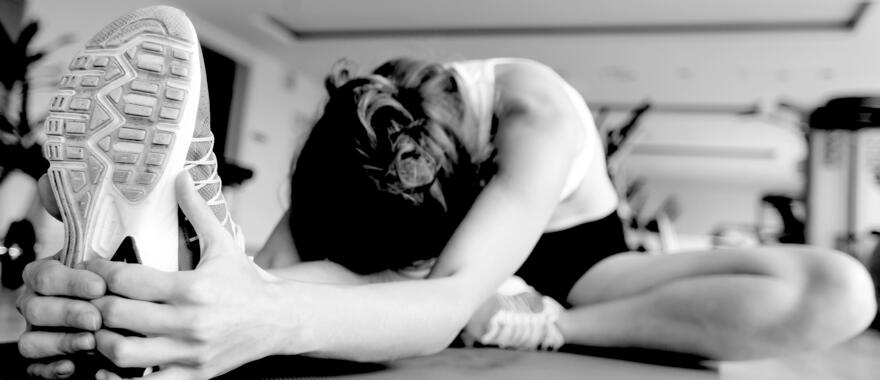The marathoner’s blueprint: Training and recovery strategies for success

Posted: August 14, 2024
The decision to run a marathon is opting to push your body to its limits physically and mentally. It’s a grueling process in hopes of reaching a euphoric feeling at the finish line on race day.
However, training for a marathon is more than just running long distances. There are lots of planning logistics and recovery strategies that support successful training.
Proper training helps runners avoid injury as they prepare for and take on race day.
“There are a lot of times where people go in unprepared, and they get in over their heads,” Jenny Dalland said, an athletic trainer for Sanford Sports. “Improper training and fueling strategies can lead to a poor race outcome or possible injury."
A runner must choose a training schedule and research what recovery techniques they are going to use to help them stay healthy throughout the process.
“Sanford Sports is a resource for any type of runner and any type of goal,” Dalland said. “There’s a lot of cross communication between our strength coaches, athletic trainers, physical therapists and sports nutritionist. We all work together to come up with the best plan for an athlete.”
Start with a 3D running analysis
From the warmup to the final push, every stride counts and it’s important that runners maintain proper form. A 3D running analysis at Sanford Sports uses 3D motion capture to evaluate running mechanics and provides a personalized program to help runners prevent injuries and improve performance.
“The goal of the analysis is not to change or overhaul somebody’s running form,” Dalland said. “It’s to identify the strength and mobility limitations they may have and provide corrective feedback to optimize their running form. This is done with running drills, gait cues and corrective exercises.”
3D analysis helps runners sand the rough edges of their form. With adjustments, runners could see significant improvements in speed, endurance and overall efficiency.
Dalland recommends an analysis prior to starting a training program.
“If a runner has a race goal in mind, or they have an injury history, a running analysis can be a great option to get your training off to the right start.”
Stay focused on proper recovery
While it’s important to log miles throughout your training, it’s equally important to take care of your body.
“It’s important that you go into long runs with good hydration and adequate nutrition, as well as being diligent with a warmup. The greater preparation you do for these runs, the better your outcome.” Dalland said.
As the miles start to add up throughout the training, it’s important to focus on soft tissue mobility to keep your muscles loose for the demands of long-distance running and to help you feel your best on race day.
Foam rolling targets tight muscles using a cylinder foam roller. This helps improve blood flow and mobility, while also reducing muscle tension.
Proper stretching helps promote soft tissue mobility and helps prevent muscle pulls. Dynamic stretching uses controlled movements that mirror running motions to help the muscles warm up prior to a workout. Static stretching involves holding a lengthened muscle position for a sustained time and is most beneficial when completed after activity or within a cool down routine.
Normatec compression system helps runners mitigate soreness to bounce back faster from long runs.
“You put these boots on, and they fill up with air, starting from the feet and working their way up to the hips,” Dalland said. “It creates a muscle pumping effect to help improve blood flow and decrease inflammation to promote healing while also reducing pain in the lower legs.”
Each session with the Normatec recovery system lasts 20 minutes and costs $20.
Dry needling is an intramuscular technique that offers relief from muscle pain and helps runners restore mobility.
“Dry needling uses a very fine needle to target painful points or restrictions in the muscle,” Josie Stockland, a senior physical therapist for Sanford Sports said. “It can be used on muscles that are tight, painful or have been injured in the past. It can be helpful to “reset” muscle tone and reach a calmer state. Some marathoners use dry needling to prepare for or recover from their long runs and key workouts.”
The AlterG anti-gravity treadmill is a state-of-the-art training and rehab device that allows the user to run in an off-weighted environment, selectively decreasing impact on their joints and muscles. This can be a helpful tool when returning to running from an injury. Runners can also use the AlterG to perform training miles in a partially offloaded state, helping legs feel more fresh compared to running the same distance overground.
Embrace a post-marathon break
Crossing the finish line is a monumental achievement that can have you looking forward to the next marathon, but it’s important to let your body fully recover from the rigors of training and race day.
After hitting your peak or achieving a personal record on race day, proper recovery allows your body to repair and prevent injuries.
“After a peak race or personal best, you just took your tissues to the max,” Stockland said. “There is breakdown in the tissues that needs time to recover. We recommend taking at least a week and up to four weeks off running following a peak marathon. A break from repetitive running forces allows the body to reset and get ready for the next training cycle. It’s a great time to cross train and do other activities the runner enjoys.”
Whether you’re participating in a marathon for the first time or trying to set a personal best, our state-of-art technology and trusted staff will ensure you are taking the right approach to training and recovery.
“We work with runners of all ages and all abilities,” Dalland said. “You do not have to be a high-level elite runner to take advantage of the services we provide at Sanford Sports.”
Learn more about how Sanford Sports can help you cross the finish line on race day at Sanford Sports Performance.




